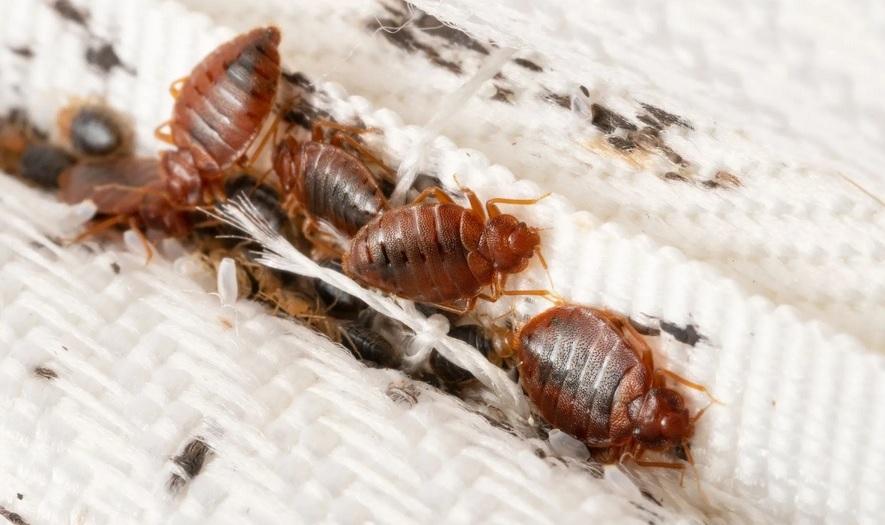In an ever-evolving world, the cohabitation of pets and humans presents unique challenges and delightful rewards. One indispensable tool in the feline care arsenal is the humble cat cage. Often misunderstood as a mere confinement apparatus, a cat cage can be a sanctuary of safety, a realm of recuperation, and an essential device for peaceful multi-pet households. This article delves deep into the multifaceted uses and benefits of “My Cat Cage,” uncovering how this piece of essential equipment can enhance the lives of both cats and their caretakers. Whether you are introducing a new member to your feline family or seeking ways to improve your pet’s wellbeing, “My Cat Cage” might just be the solution you didn’t know you needed.
Table of Contents
- Choosing the Perfect Cat Cage: Key Features Every Pet Owner Should Look For
- Building a Comfortable Sanctuary: Inside Your Cat’s Cage Setup
- Safety First: Essential Tips for Secure and Stress-Free Cat Confinement
- Tailoring Your Cat Cage: Personalizing for Your Feline’s Needs and Preferences
- Q&A
- Wrapping Up
Choosing the Perfect Cat Cage: Key Features Every Pet Owner Should Look For
Selecting the right cat cage can make all the difference in ensuring your feline friend’s comfort and safety. When browsing through options, there are several critical features to keep in mind. Here are some of the most essential elements you should look for:
<ul>
<li><strong>Size and Space</strong>: The cage should offer ample space for your cat to move around, stretch, and relax. Cats enjoy having some vertical space, so a cage with multiple levels can be a great choice. Aim for a cage that accommodates your cat's size and activity level comfortably.</li>
<li><strong>Sturdiness and Materials</strong>: Opt for cages made from high-quality, durable materials. Metal cages with a non-toxic coating are ideal as they are robust and resistant to wear and tear. Ensure the materials used are safe and do not have sharp edges that could harm your pet.</li>
<li><strong>Accessibility and Convenience</strong>: Look for cages with multiple access points. This will make it easier for you to reach your cat or clean the interior. Removable and adjustable trays can add to the convenience, facilitating quick cleaning and maintenance.</li>
</ul>
As you evaluate different models, it's also beneficial to consider mobility and storage options. Some cages are designed with collapsible structures for easy storage when not in use or for transport purposes.
<table class="wp-block-table">
<thead>
<tr>
<th class="has-text-align-center"><strong>Feature</strong></th>
<th class="has-text-align-center"><strong>Importance</strong></th>
</tr>
</thead>
<tbody>
<tr>
<td class="has-text-align-left">Multiple Access Points</td>
<td class="has-text-align-left">High</td>
</tr>
<tr>
<td class="has-text-align-left">Removable Trays</td>
<td class="has-text-align-left">Medium</td>
</tr>
<tr>
<td class="has-text-align-left">Collapsible Design</td>
<td class="has-text-align-left">Medium</td>
</tr>
</tbody>
</table>
don't forget to look into additional features such as built-in feeding compartments, secure locking mechanisms, and adequate ventilation. Ventilation is crucial to ensure a healthy environment within the cage, promoting ample airflow and reducing any unpleasant odors. Always prioritize your cat's comfort, safety, and happiness while making your choice.
Building a Comfortable Sanctuary: Inside Your Cat’s Cage Setup
When creating a cozy and secure space for your feline friend, it’s important to consider their comfort, safety, and stimulation. Start by selecting a spacious cage that allows your cat ample room to move around[[[[2]. Line the bottom of the cage with a soft, washable mat or blanket to provide warmth and cushioning. For added comfort, include a small bed or cushion in one corner where your cat can retreat for peaceful naps.
<p>Enrichment is crucial for your cat’s mental and physical well-being. Include a variety of toys and activities within the cage to keep your cat entertained and happy. Here are some ideas to consider:</p>
<ul>
<li>Puzzle feeders: Stimulate your cat’s mind while providing small treats.</li>
<li>Dangling toys: Hang these from the top of the cage to encourage play and exercise.</li>
<li>Scratching posts: Add a small post or pad to the cage to satisfy your cat’s natural scratching instinct.</li>
</ul>
<p>While safety is paramount, your cat also needs easy access to essentials. Make sure to include dishes for food and water that attach securely to the cage walls to prevent spills and contamination. Additionally, a litter box should be placed in a corner away from the resting and feeding areas to keep the space hygienic and comfortable.</p>
<p>Visibility and interaction play significant roles in your cat’s adjustment to the new environment. Position the cage in a quiet area of your home where your cat can observe household activities without feeling overwhelmed. Over time, this will help them become more social and relaxed [<a href="https://www.reddit.com/r/Feral_Cats/comments/16dh7qq/need_enclosure_ideas_for_taming_feral_kittens/">3</a>]. To accommodate your cat’s need for a safe retreat, consider draping a blanket over part of the cage to create a private space they can retreat to if they feel stressed or scared.</p>
<p>Creating a sanctuary for your cat within their cage is not just about providing a physical space but also ensuring a balanced environment where they feel safe, engaged, and loved. By focusing on their needs, you can build a comforting home that supports their well-being and development.</p>
Safety First: Essential Tips for Secure and Stress-Free Cat Confinement
Creating a secure and stress-free environment for your cat is paramount, especially during the initial confinement period in a new home. Ensuring your feline friend’s safe space is comfortable and free from hazards can help ease their transition.
1. Designate a Safe Space
Choose a quiet, small area with a door where your cat can feel secure. Bathrooms or small bedrooms are ideal. Equip this space with essentials like a litter box, food and water dishes, and a cozy bed. This isolated environment protects your cat from potentially overwhelming household noise and activity, facilitating a smoother adjustment period.
2. Remove Toxic Substances
Household cleaners like Lysol can be harmful to cats if ingested or inhaled. Before allowing your cat into their new space, thoroughly check for and remove any toxic substances. Safe cleaning alternatives include diluted vinegar or cat-friendly cleaning products.
3. Safe Introduction to the Rest of the Home
Gradually introduce your cat to the rest of your home. Start by allowing them to explore one room at a time under supervision. Ensure all windows are securely screened and remove potentially harmful items from their reach, such as small objects or string-like materials that could be swallowed.
- Check for potential escape routes and block them.
- Keep dangerous plants or flowers out of reach.
- Use baby gates if needed to restrict access to particular areas.
4. Provide Enrichment and Comfort
To prevent boredom and reduce stress, offer plenty of enrichment activities. Interactive toys, scratching posts, and climbing trees can keep your cat entertained and mentally stimulated while confined. Regular play sessions also help build a bond between you and your cat.
| Item | Purpose |
|---|---|
| Interactive Toys | Mental stimulation and physical exercise |
| Scratching Posts | Nail maintenance and stress relief |
| Comfy Bed | Rest and security |
Following these essential tips can create a nurturing environment that supports your cat’s well-being and helps them settle into their new home with ease.

Tailoring Your Cat Cage: Personalizing for Your Feline’s Needs and Preferences
Understanding your cat’s unique personality and preferences is essential when customizing their cage. Start by identifying what your feline friend enjoys most. Do they love to climb, hide, or watch the world go by? Incorporate a variety of elements that cater to these interests. Shelves and perches at different heights can satisfy their climbing desires, while hidey holes or enclosed spaces can provide a sense of security and comfort.
Comfort is key in making your cat cage a cozy retreat. Line the bottom with soft bedding, such as a plush blanket or cushioned mat. This not only provides comfort but also makes clean-up easier. Adding a few of their favorite toys can transform the space into a play area, keeping them entertained. Consider interactive toys like catnip-stuffed mice or feather wands that can be attached to the cage bars for added stimulation.
| Item | Description |
|---|---|
| Shelves & Perches | Various heights for climbing and resting |
| Hidey Holes | Enclosed spaces for security |
| Soft Bedding | Comfortable and easy to clean |
| Interactive Toys | For play and stimulation |
Ventilation and visibility are also crucial components. Ensure the cage has adequate airflow to prevent it from becoming stuffy, and make sure there are clear sightlines so your cat can keep an eye on their surroundings. A cat who feels connected to their environment is typically a happier one. Cover part of the cage with a light, breathable fabric if you notice your cat prefers a darker, cozier nook for napping.
Lastly, consider your cat’s health and hygiene. Ensure that food and water bowls are secured to prevent spills, and place a small litter tray in an accessible area. Regular cleaning of the cage and its contents is vital to maintain a hygienic and pleasant space, reducing stress and promoting overall well-being.
Q&A
Q&A Article: Everything You Need to Know About “My Cat Cage”
Q1: What is “My Cat Cage”?
A1: “My Cat Cage” is a specialized enclosure designed to provide a safe and comfortable environment for your feline friend. Ideal for both temporary confinement and long-term housing, these cages ensure your cat’s safety while offering ample space for play and rest.
Q2: Why would I need to use a cat cage?
A2: There are several reasons to use a cat cage. Firstly, it provides a secure space for your cat during travel or when introducing new pets to the household. Secondly, it can be helpful for managing cats that are recovering from surgery or illness, ensuring they do not exacerbate their condition. Lastly, it’s useful for training and behavior correction.
Q3: How can I make sure my cat is comfortable inside the cage?
A3: To make your cat comfortable inside the cage, ensure that it is well-stocked with essentials: a cozy bed, water and food bowls, and some of your cat’s favorite toys. Place the cage in a quiet and familiar area of your home to reduce stress. Regularly interact with your cat to keep them feeling loved and secure.[[1]]
Q4: Are there any safety considerations I should be aware of?
A4: Yes, safety is paramount when using a cat cage. Ensure that the cage is of high quality and has no sharp edges that could harm your cat. It should be large enough for your cat to stand, turn around, and stretch comfortably. Regularly check for any signs of wear and tear that might compromise safety.
Q5: What should I do if my cat gets out of the cage unexpectedly?
A5: If your cat escapes the cage, stay calm and try to lure them back with treats or their favorite toys. Avoid chasing them as this can cause further stress and lead them to run away. Instead, softly call them and gradually guide them back to safety. In the case that your cat goes missing, quickly inform your neighbors and consider using flyers or social media to spread the word. Sometimes, pet transportation incidents can result in lost pets[[3]].
Q6: Can I use “My Cat Cage” for other pets?
A6: While “My Cat Cage” is specifically designed for cats, it can be suitable for housing other small animals temporarily. For example, if introducing a new pet to your cat, you might use the cage to create a controlled environment for their initial interactions. However, always monitor these interactions closely and ensure all pets feel safe and are not overly stressed.[[1]]
Q7: How can I clean and maintain the cat cage?
A7: Maintaining a clean cage is essential for your cat’s health. Regularly clean the cage by removing any waste, washing the bedding, and disinfecting the surfaces. A mild pet-safe cleaner should suffice. Ensure everything is completely dry before placing your cat back inside to prevent mold and bacteria growth.
By understanding how to effectively use and maintain “My Cat Cage,” you can create a secure, comfortable, and happy environment for your beloved feline friend. If you have more questions, feel free to reach out to pet care professionals or join online forums for shared experiences and advice.
Wrapping Up
As we conclude our exploration of “My Cat Cage,” it’s evident that providing a safe, comfortable, and engaging environment for your feline friend is an investment in their well-being and happiness. Whether it’s a cozy corner for relaxation or a dynamic space for play, each feature of the cat cage contributes to your pet’s daily joy and health.
Thank you for joining us on this journey. May your cat’s new sanctuary bring countless purrs and playful moments. If you have any personal stories or tips about enhancing your cat’s space, feel free to share in the comments. Until next time, here’s to creating the perfect haven for your beloved companion!







0 Comments